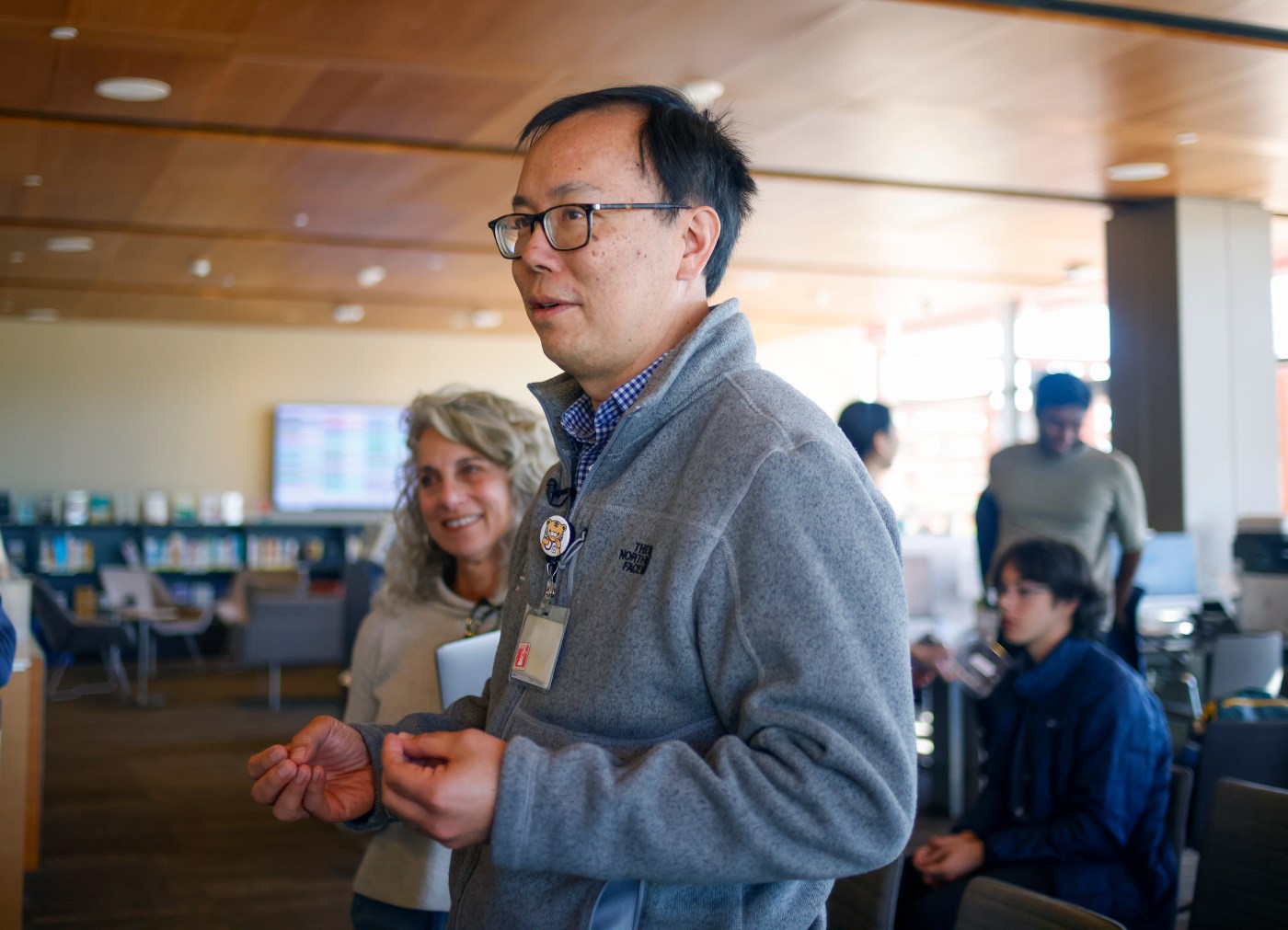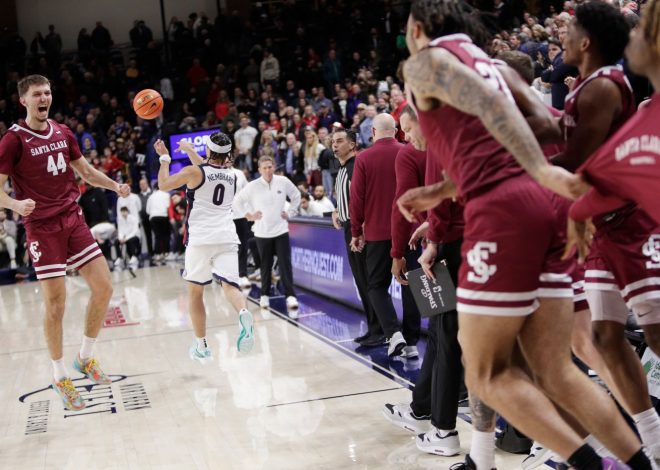
When the lung cancer patient is a beloved Stanford teacher and physician, learning gets personal
Statistics. They form the foundation of modern medicine, forecasting how long a person might live.
But Dr. Bryant Lin’s view of statistics changed as soon as he became one.
Rather than focusing on cancer’s tough odds, Lin’s unique Stanford class — MED 275: “From Diagnosis to Dialogue: A Doctor’s Real-Time Battle with Cancer” — takes students on a journey through diagnosis and treatment and highlights the critical importance of community, caregiving, nutrition, storytelling, spirituality, reflection and dogged determination.
“If you look at the survival curves, you would give up. But you may be one of the lucky ones. You need to have optimism, tinged with reality,” said Lin, a beloved clinical professor and 50-year-old nonsmoker with two teenage sons who was diagnosed with advanced metastatic lung cancer earlier this year.
“As a patient, but also being a physician, I have a foot in both worlds,” he said. “I want to share that unique perspective.”
A longtime caretaker of very ill patients, Lin mentors Stanford’s medical students in a clinical setting, helping them to apply their theoretical knowledge to bedside medicine.
He also conducts research and holds 13 patents for new medical technologies, informed by his undergraduate and master’s degrees in Electrical Engineering and Computer Science from the Massachusetts Institute of Technology.
Of Taiwanese heritage, Lin is co-director and co-founder of the Stanford’s Center for Asian Health Research and Education, which seeks to predict, prevent and cure diseases disproportionately affecting Asian communities. Only 10% of clinical trials and genetic databases have Asian representation.
He directs Stanford’s Medical Humanities & the Arts Program with programs that integrate music, art, writing and filmmaking into the practice of medicine. A violinist, one of his favorite pieces is “The Swan,” by Camille Saint-Saens, about the fragility of life — and the passion with which we hold on to it.
As a young couple, he and his wife Christine Chan built custom furniture in the Shaker tradition.
“He’s truly a Renaissance humanist, a creator with a brilliant entrepreneurial engineer-doctor mind,” said Jacqueline Genovese, director of the program. “He’s been like a brother for me, with mentorship and advice and humor and limitless patience.”
Clinical professor at Stanford Medicine, Dr. Bryant Lin speaks during class at Stanford Hospital in Stanford, Calif., on Wednesday, Oct. 23, 2024. (Shae Hammond/Bay Area News Group)
When Stanford’s Cantor Arts Center acquired a painting by Edward Hopper, Lin organized a gathering of physicians. He planned a weekend refuge of tranquility and self-renewal at the university’s Windhover Contemplation Center for Stanford doctors and their families.
When Covid-19 reached the campus, it was Lin who created an online concert experience featuring Stanford musician-physicians. The Stanford Medicine Stuck@Home Concert series was a huge success, with nearly 2,000 attendees.
His lunchtime walk through the quiet corners of the campus was his inspiration for the 1.5-mile COVID Memorial Soundwalk, creating online curated music performed by campus musicians to commemorate the losses of the pandemic.
Related Articles
How Republicans pushed Silicon Valley to stop fighting election misinformation
Stanford psychologist behind the controversial ‘Stanford Prison Experiment’ dies at 91
Opinion: Can Stanford tell fact from fiction? Pandemic conference raises doubts
Stanford’s investment portfolio grew 8.4% percent in the last year
Utilities’ extreme plan to stop wildfires: shut off the power
With such a busy schedule, Lin initially dismissed an annoying cough that started last spring. But it continued to worsen, causing him to wheeze.
“I’ve never had a puff of smoke of anything in my life,” he said.
In one week, he got stunning news. What he assumed was just a normal spring allergy was diagnosed as stage IV non-small cell cancer, which had already progressed to his bones and liver, with 50 lesions in his brain.
The diagnosis, about a month before his 50th birthday, “was so drastically different than what I was expecting,” he said. He was quickly hospitalized.
The Stanford community was stunned by the news. “Complete disbelief. Utter shock,” said Genovese.
“If cancer could be cured by community, caring and love, he’d be cured,” she said. “Bryant is one in a million. This is someone who lifts up everyone around him.”
Lung cancer causes more deaths than any other cancer, with survival rates decreasing as the severity increases. While smokers make up the majority of those cases, 15% to 20% of people with lung cancer are non-smoking, like Lin. There is new evidence of an increase in the incidence of lung cancer in nonsmokers, although no one knows why. It is largely a silent disease that goes undetected for a dangerously long period.
The gene mutation that causes the cancer disproportionately affects those of Asian descent.
While not cured, Lin’s scans are strikingly improved after an innovative medicine called osimertinib, which targets his specific mutation. It blocks proteins that control cell growth and division. His cough is gone, and he is almost symptom-free.
“Where we can’t cure, we do a lot of work to understand more specifically about the cancer,” said Stanford medical oncologist Dr. Heather Wakelee, who is treating Lin. “He’s had such a good response.”
Clinical professor at Stanford Medicine, Dr. Bryant Lin, a 50-year-old nonsmoker who was diagnosed with advanced metastatic lung cancer earlier this year, receives his chemo treatment at the infusion clinic at Stanford Hospital. (Image from video by Todd Holland/Stanford Medicine)
Because cancer can develop resistance to drugs, research is racing to find improved therapies. “We’re working hard to find those next treatments,” she said.
Lin’s voice is still mellifluous, vibrating with warmth. With energy and good humor, his family recently invited friends to their small Menlo Park backyard to thank them for their support. About 40 people were expected — 82 showed up.
The class has proven enormously popular, with the university’s fire marshal limiting attendance only to students who have officially registered.
“He’s a lighting bolt, doing whatever needs to get done,” said Steven Duy Truong, an MD/PhD student and teaching assistant.
Gideon Witchel, a first year undergraduate, said, “He’s giving to the community in a time that’s very personal and difficult. We will all have someone in our lives who moves through cancer or something equivalent, and hearing these stories is personally enlightening.”
Clinical professor at Stanford Medicine, Dr. Bryant Lin speaks to Gideon Witchel, an undergraduate student from Austin, TX, at Stanford Hospital in Stanford, Calif., on Wednesday, Oct. 23, 2024. (Shae Hammond/Bay Area News Group)
With roles reversed, Lin says he is learning both how to be a patient and how to more fully be a doctor.
He urges doctors to not focus just on “medical science things” but the emotional and practical challenges of their patients. He urges patients to build tight community of support and deepen their relationship with their doctor, who can act as an advocate when things go wrong.
He’s not sure how much time he has left. “One year? Two years? Five years?” The class, he said, “is to give back to my community as I go through this.”
The power of cancer storytelling
What: A cost-free opportunity to learn techniques for sharing personal cancer experiences — whether you’re a patient, caregiver, or advocate — through engaging workshops across art forms. Presented by Stanford Medical Humanities & the Arts in partnership with the Center for Asian Health Research and Education, Stanford Health Library, and the Cancer Survivorship Program at Stanford Cancer Institute.
When: Saturday, Nov. 16 from 11:30 a.m. to 4 p.m.
Where: Stanford Health Library (211 Quarry Road, Suite 201)
How to register: Go to this link and sign up: https://stanforduniversity.qualtrics.com/jfe/form/SV_6JR9HdL2YvMAXPw
Clinical professor at Stanford Medicine, Dr. Bryant Lin speaks during class at Stanford Hospital in Stanford, Calif., on Wednesday, Oct. 23, 2024. (Shae Hammond/Bay Area News Group)


